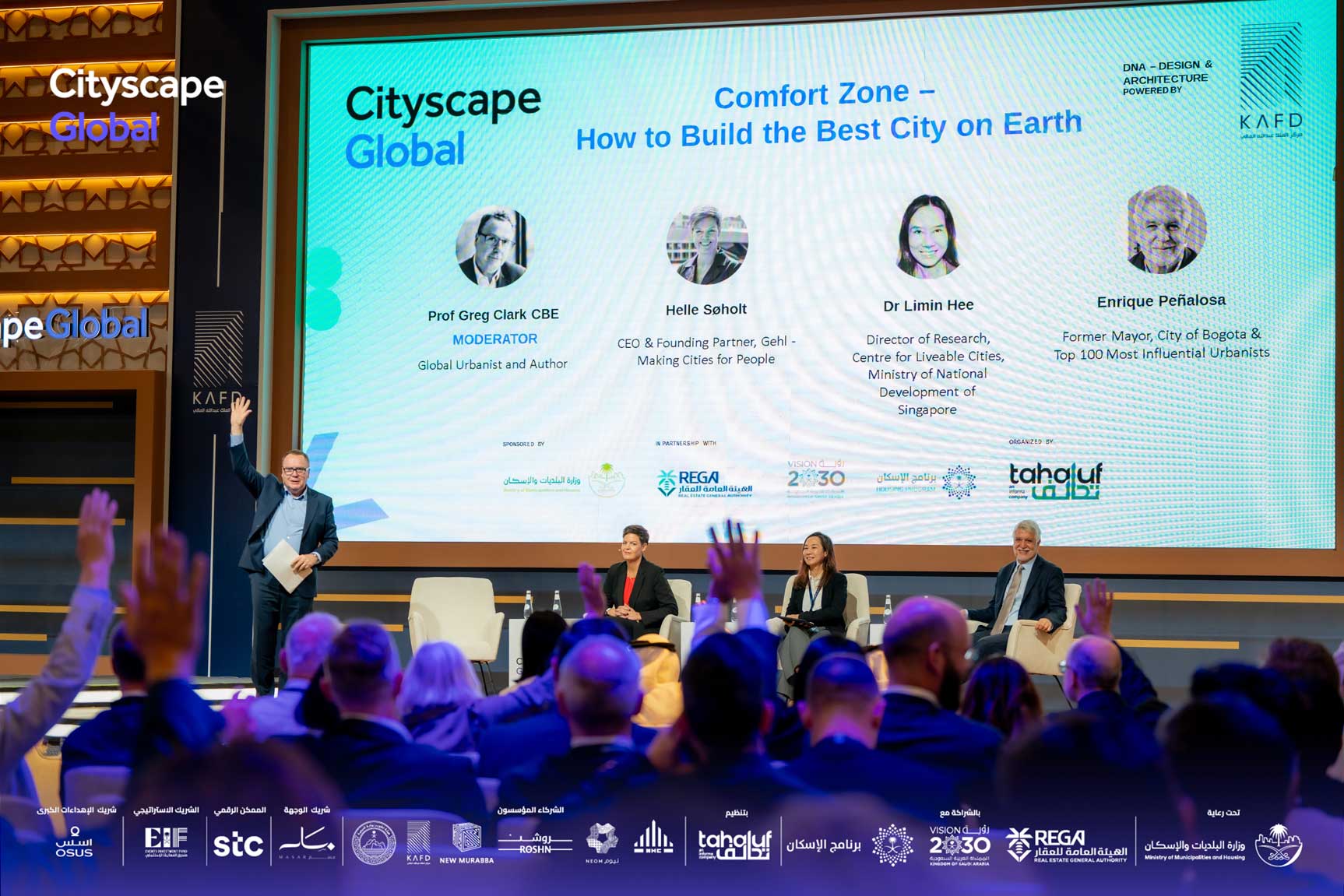
CLC was invited to speak about building the best cities at the Cityscape Global 2024 in Riyadh, Saudi Arabia, from 10 to 14 November 2024.
Cityscape Global is the largest real estate event in the Middle East and North Africa (MENA); it is a platform for architects, urban planning specialists, consultants, investment and economic agencies, and cities to convene and discuss the most recent and upcoming advancements in the region. Themed “The Future of Living”, Cityscape Global 2024 was attended by 172,000 including exhibitors, speakers and seven conferences.
CLC’s research director Dr Hee Limin presented at a panel session titled “Comfort Zone – How to Build the Best City on Earth”, alongside Ms Helle Søholt, Founding Partner & CEO of Gehl Architects, and Mr Enrique Penalosa, Former Mayor of Bogota, Columbia. Dr Hee’s presentation focused on how Singapore leverages the Science of Cities for its liveability and sustainability. She shared on two main areas – firstly, the latest edition of CLC’s Liveability Framework – an updated understanding of urban liveability outcomes and supporting systems. The Framework incorporates diverse perspectives to guide policymakers in creating more liveable and sustainable cities amidst evolving challenges and resource constraints.
Secondly, Dr Hee spoke about Singapore’s Science of Cities approach, exemplified by our use of Integrated Environmental Modelling (IEM) and the Digital Urban Climate Twin (DUCT). These leverage on data-driven tools and collaborative ecosystems to create more liveable urban environments, particularly in addressing challenges like the Urban Heat Island effect.
Speakers further highlighted useful case studies and best practices from different cities during the panel discussion. Ms Søholt’s shared Copenhagen's success in promoting a circular economy and prioritising pedestrians, cyclists, and public spaces. The Danish capital's approach is particularly noteworthy for its foundation in research on human behaviour, ensuring that urban planning decisions are tailored to residents’ actual utilisation of spaces and their interaction with the environment. Former mayor of Bogota Mr Peñalosa spoke about how sustainable urban transport systems and thoughtfully designed public spaces can foster equity and improve city life.
With presentations on frameworks and systems, as well as case studies, this session provided the audience a well-rounded understanding of how innovative strategies can create more liveable, sustainable, and equitable urban environments.
Contributed by:
Kikuzawa Yuichi, Assistant Director, Research